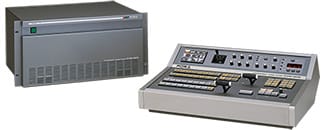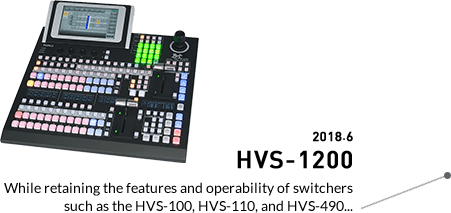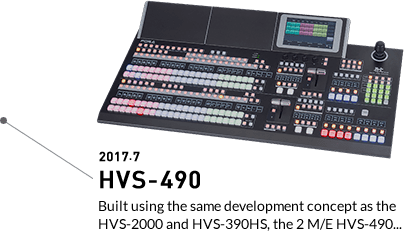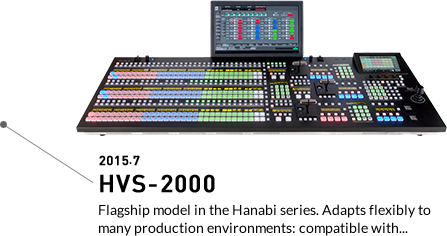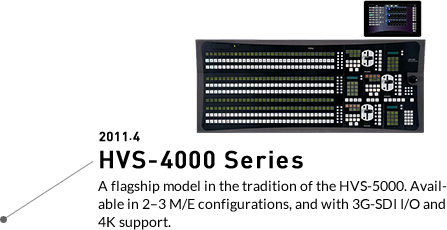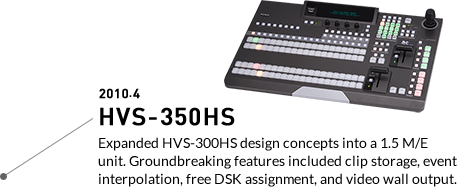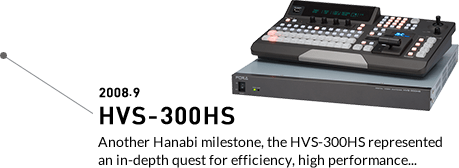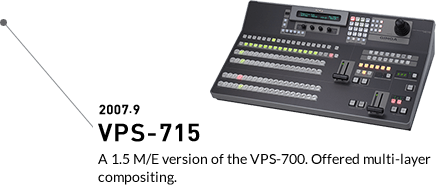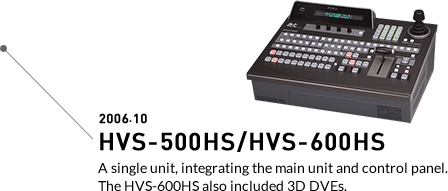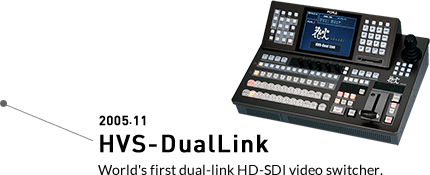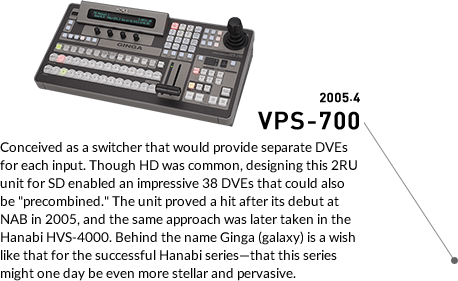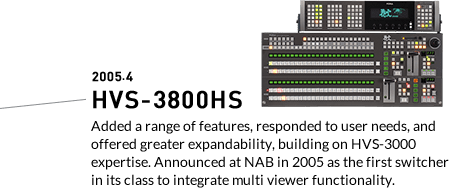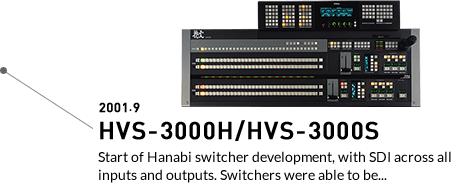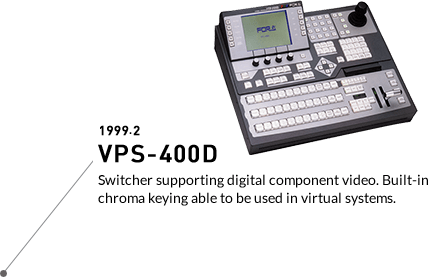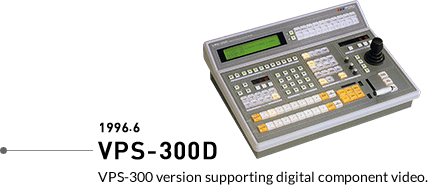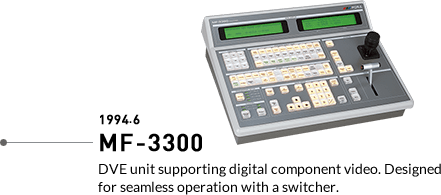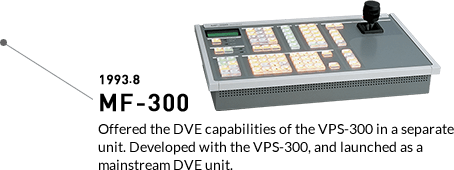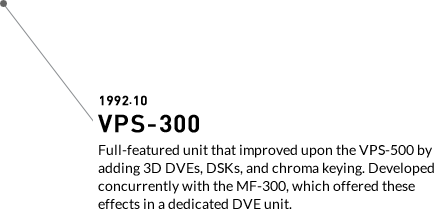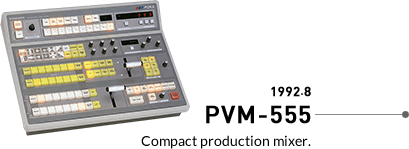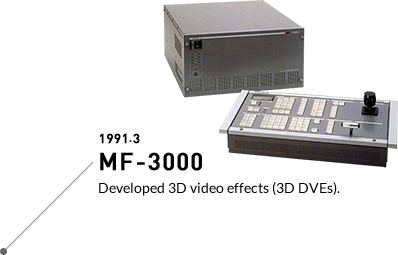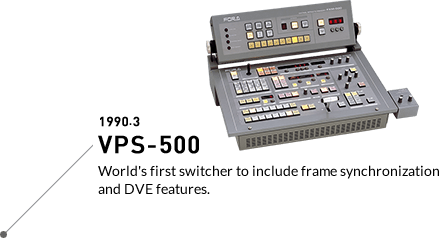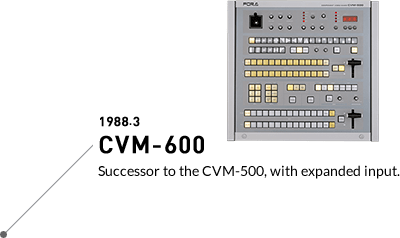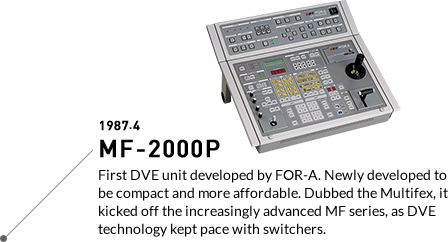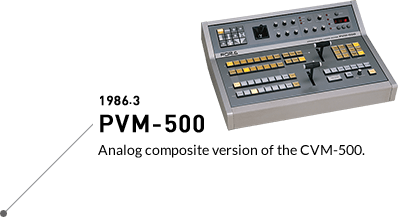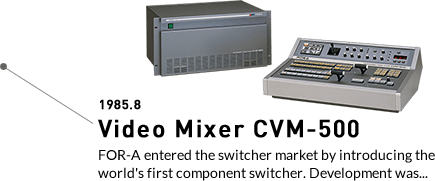Operability equivalent to HD operation even during 4K operation
The HVS-6000 supports up to 3 M/Es in 4K (UHD) and a maximum of 80 inputs and 32 outputs, while the HVS-6000M delivers 2 M/Es and up to 32 inputs and 24 outputs. All inputs and outputs are 12G-SDI compatible, and the same number of inputs, M/Es, and keyers are available in both 4K (UHD) and HD mode. With 4K processing of all sources and effects, both switchers offer the functions and operability of HD operation even during 4K operation. These flagship models also provide extended functionality that will be needed in future, such as IP input and output compatibility and HDR, preparing users for next-generation environments.
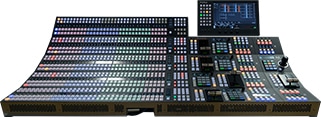
A compact switcher with 12G-SDI support
While retaining the features and operability of switchers such as the HVS-100, HVS-110, and HVS-490, the HVS-1200 provides 12G-SDI support, as well as frame sync, as standard for all inputs and outputs. MELite™, FOR-A’s advanced AUX transition function, can be assigned before M/E buses, allowing the compact HVS-1200 to deliver operation equivalent to 2 M/Es in 4K (UHD) or 6 M/Es in HD. An integrated two-channel multi-viewer allows two separate displays of up to 16 sources. The HVS-490 series control panel can also be used with the HVS-1200 for 4K operation in compact spaces.
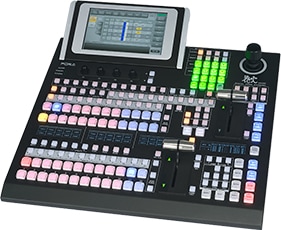
A 4K-compatible switcher suitable for a broad range of live productions
Built using the same development concept as the HVS-2000 and HVS-390HS, the 2 M/E HVS-490 switcher features MELite™ technology that offers the performance equivalent of 6 M/Es. Expand switching capabilities even more by assigning FLEXaKEY™ or feature rich 2.5D DVE for compositing with up to 12 keyers. The HVS-490 also provides three displays of multi-viewer output, each supporting up to 16 sources. Using HDMI 2.0 Level B output, three multi-viewer streams and the program output can be displayed on a single 4K monitor, making the HVS-490 suitable for live staging, uplink production trucks, and other applications. The HVS-490 can also serve as a 4K video switcher by using the Quad Link 3G-SDI option.
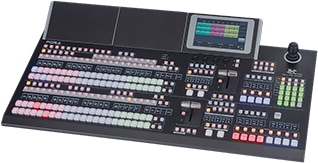
Flagship switcher for the era of 4K production
Flagship model in the Hanabi series. Adapts flexibly to many production environments: compatible with either HVS-2000 control panels or existing HVS-390 control panels. Maximum switcher performance, from convenient features including MELite™, FLEXaKEY™, P-MEM™, ONStage™, and Midas Touch™. Continues to evolve to meet current needs, as shown in a newer 3 M/E expansion option (supplementing the 2 M/E launch model), 4K support, and 3D DVEs compatible with 4K 2SI.
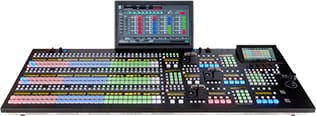
Seeking the ultimate in compact switchers
Applying expertise from the HVS-300 series, development of a new Hanabi series would raise the bar in compact switchers. To make these models even more compact yet more capable and economical, both internal circuits and program production itself were thoroughly reviewed. Two models were offered—one consisting of a separate main unit and control panel (as in the HVS-300 series), and the other integrating both components. Since launch, the response has been tremendous. To prepare for future needs, the switchers can also be upgraded for 4K production. We invite you to see their features and performance yourself.
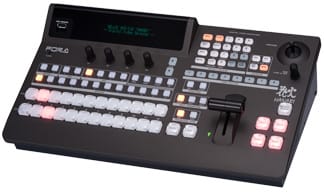
A new way to use aux buses: MELite
The culmination of HVS-300 series advances. Available in 1 and 2 M/E models, along with an array of control panels. Offers higher performance in many ways (such as optional storage of clips to internal memory), but the greatest advance is MELite™. DSKs and wipe/mix effects can be assigned to aux buses, enabling effects on output other than PGM. By enabling playout to large screens at live events or to monitors recaptured by cameras shooting a program, and by enabling title changes in second-screen applications, the unit simplifies presentation that were once difficult with a single switcher.
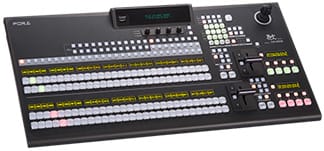
Impeccable design that redefined compact switchers
Another Hanabi milestone, the HVS-300HS represented an in-depth quest for efficiency, high performance, and affordability. Comprehensive features included mixed HD/SD input, frame synchronization, resizing, PiP, and multi viewer functionality. Besides SDI, support for analog and computer I/O was also available. No exaggeration—the impeccable design changed people's expectations of compact switchers.
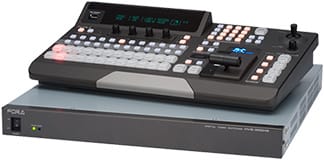
Designed as world-class switchers
Start of Hanabi switcher development, with SDI across all inputs and outputs. Switchers were able to be broadly classified by use—whether for editing or live applications—and because emerging NLE systems seemed likely to reduce demand for editing switchers, FOR-A designed the Hanabi series for live applications where switchers would remain the most effective production system. Convenient size was therefore a priority, and an ambitious goal was set: HD switchers with the world's smallest (3RU) main unit. To do so, the engineers took on the challenge of making a postcard-size SD/HD DVE board, and their success overturned conventional thinking.
Behind the name Hanabi (fireworks) is respect for the explosive spread of a tradition still popular in Japan. Just as it took only a short time, historically speaking, after fireworks provided entertainment in feudal Japan until people everywhere were enjoying them, FOR-A hoped Hanabi switchers would soon rise to prominence worldwide.
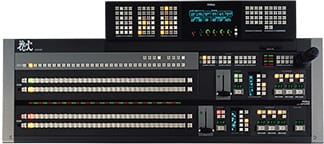
Developed the world's first analog component switcher
FOR-A entered the switcher market by introducing the world's first component switcher.
Development was led by two engineers from the U.S., where demand for these video system "control centers" was especially high. The team faced several challenges: Analog component technologies were still immature, peripherals were not yet compatible, production costs were three times higher than for analog composite equipment, and no instruments were available to evaluate performance. The CVM-500 took more than two years to develop, as the team cut costs, developed their own instruments, and devised ways to process component signals. Announced with much fanfare at IBC, the mixer made quite an impact.
